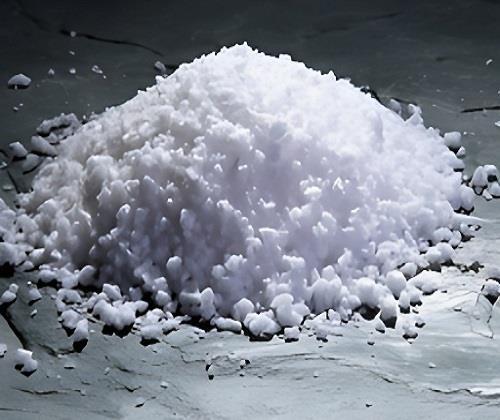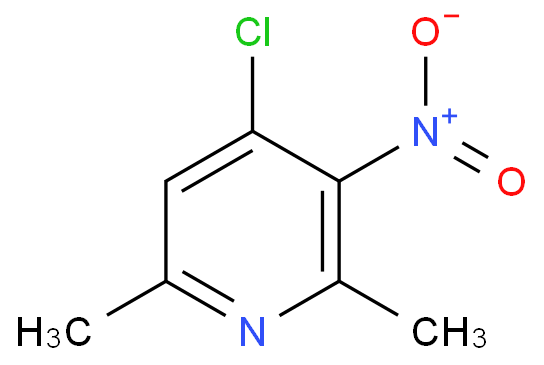 |
4-Chloro-2,6-dimethyl-3-nitropyridine, with a chemical formula of C5HCl3N2O2, is a white to pale yellow solid substance. Its name directly reflects the characteristics of its molecular structure: a chlorine atom at position 4, methyl groups (-CH3) at positions 2 and 6, and a nitro group (-NO2) at position 3. This structure gives it unique chemical properties, making it important in various fields.

Characteristics of 4-Chloro-2,6-dimethyl-3-nitropyridine
4-Chloro-2,6-dimethyl-3-nitropyridine has a melting point of approximately 70-73°C, indicating its transition from solid to liquid near this temperature. Additionally, its predicted boiling point is 270.3°C, showing stability at higher temperatures. The compound has a predicted density of 1.342±0.06 g/cm3, indicating a relatively high density. It is a solid in form, easy to handle and store. Furthermore, 4-Chloro-2,6-dimethyl-3-nitropyridine is relatively stable at room temperature and less reactive with most chemicals. However, due to the nitro group, it may react under strong oxidizing or reducing conditions. Also, with a chlorine atom in its molecule, it may undergo photolysis or thermolysis reactions under light or high temperature conditions.
Due to its specific molecular structure, 4-Chloro-2,6-dimethyl-3-nitropyridine is often used as an intermediate in organic synthesis. By reacting with other compounds through substitution, addition, elimination, etc., specific organic compounds with unique structures and functions can be synthesized. These compounds find wide applications in medicine, pesticides, dyes, and other fields.
4-Chloro-2,6-dimethyl-3-nitropyridine and its derivatives have potential applications in the pharmaceutical field. They can serve as drug precursors or active ingredients for treating various diseases. For example, drugs containing a nitropyridine structure have vasodilation and blood pressure-lowering effects, suitable for cardiovascular disease treatment.
In the field of pesticides, 4-Chloro-2,6-dimethyl-3-nitropyridine and its derivatives also have value. They can act as active ingredients in insecticides, fungicides, or herbicides to protect crops. These pesticides effectively control pests, pathogens, and weeds, enhancing crop yield and quality.
[1] Shen Xuequan, Wu Yonglong, Bao Qiming, et al. Synthesis of 4-Chloro-2,6-dimethyl-3-nitropyridine[J]. Zhejiang Chemical Industry, 2012(07):24-26.
[2] Liu Hongqiang, Wei Jiayu, Yang Yi, et al. A method for preparing 4-Chloro-2,6-dimethyl-3-nitropyridine: CN202111212165.1[P]. CN202111212165.1[2024-06-30].
[3] Shen Xuequan, Wu Yonglong, Bao Qiming, et al. Synthesis of 4-Chloro-2,6-dimethyl-3-nitropyridine[J]. Zhejiang Chemical Industry, 2012, 43(7):3.
 |